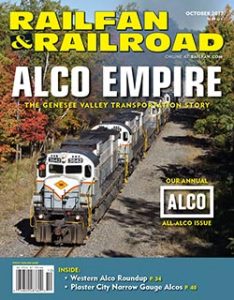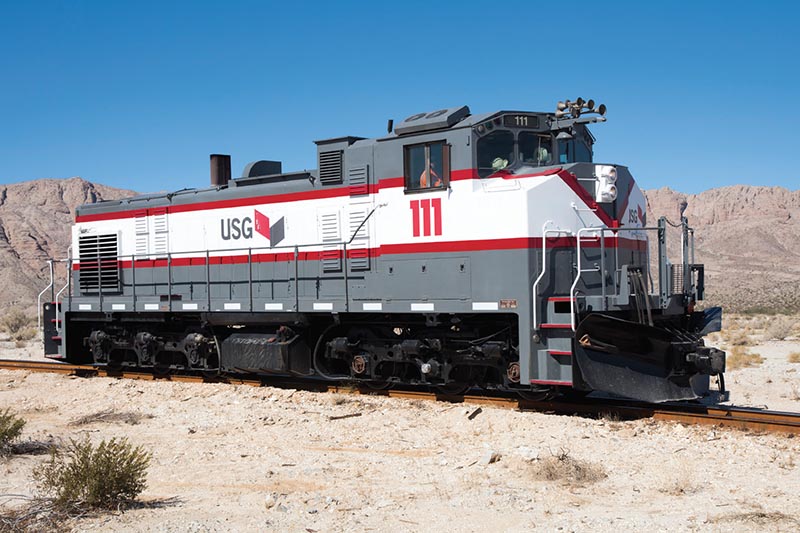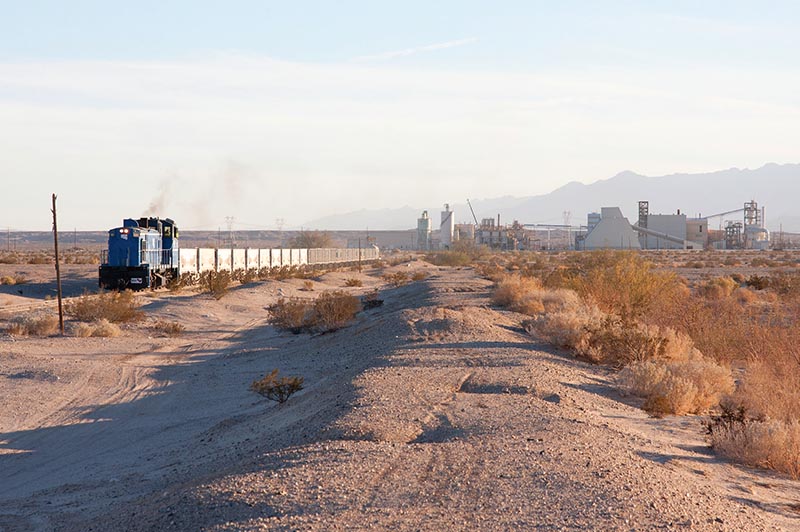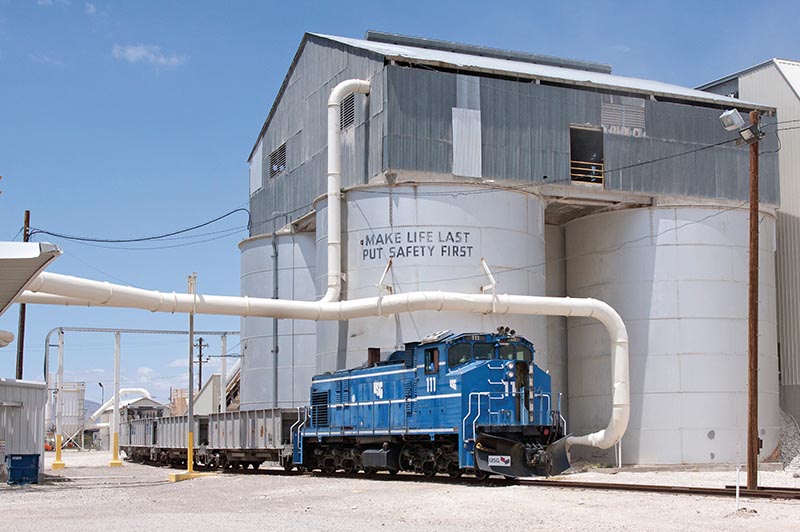 By Charles Freericks/photos by the author
By Charles Freericks/photos by the author
You may not know it, but there are wide-nosed, narrow-gauge, Alco-designed, Bombardier-built, 35-year-old DL-535Es running right now in the California desert.
Located two hours south of Palm Springs, and 90 minutes east of San Diego, Plaster City, Calif., is perhaps the ultimate company town with a single raison d’être, which is to house the sprawling U.S. Gypsum facility that gives the town its name. Small as it is, Plaster City also hosts three railroads, one of which is unlike anything you can find anywhere else in the contiguous 48 states. This is the last industrial narrow gauge railroad in America, the U.S. Gypsum mine line that runs north to a quarry in the Fish Creek Mountains, which is estimated to contain a deposit worth 25 million tons of gypsum.
It was the search for oil that first brought speculators to the Imperial Valley in the early 1900s. While they didn’t find oil, it would be nearly 20 years before anyone decided to exploit the large deposit of gypsum that they did find. Operations on the railroad date back to 1922 and, except for the need to occasionally replace worn-out equipment, have continued in a similar fashion for the 95 years since.
On most mornings, one of the burbling DL-535Es with an incongruous large snow plow on its pilot will trundle from the engine facility south of Evan Hewes Highway, build its train, and head the 26 miles to the quarry where the train will be loaded with crushed gypsum that will then be brought back to Plaster City for finer crushing and processing. Depending on housing starts, this process is repeated two to three times a day. The present schedule is three times a day, with at least one Saturday run, too.

USG’s handsome new paint scheme has given operations a brand new look. Engine No. 111 shows off its new paint on the hairpin curve in Ocotillo Wells.
The mine railroad was originally conceived and built by San Diego pharmacist Samuel Dunnaway, who had relocated to El Centro and became aware of a vast deposit of gypsum in the Fish Creek Mountains. (As a personal aside, my great-grandfather was also a San Diego pharmacist who moved to a desert town and tried to take up mining at about the same time, but to lesser results.) Dunnaway formed the Imperial Gypsum & Oil Company in 1920 and the following year began construction of a three-foot-gauge railroad from the mine to a connection with the San Diego & Arizona Eastern in what would eventually become Plaster City. Construction (and later operation) was challenged by drifting sand, as well as sand’s lack of resistance to flooding, but there were no major issues and the line was built as scheduled. It had no formal name, and was simply referred to as “the railroad.”
When trains began running in 1922 there wasn’t a plant yet in what would become Plaster City, so the gypsum was transloaded to standard gauge trains for shipment to processors. Shortly thereafter, Dunnaway sold his operations to Pacific Portland Cement, which took over in 1924 and built the first processing facility where the plant sits today. During this period, secondhand steam locomotives provided power. Sometime around 1945, the railroad acquired its first diesel and the entire operation was sold to U.S. Gypsum. The entire line was upgraded from 35-pound to 70-pound rail, and dieselization was essentially complete by 1947.
When the diesels proved problematic, the railroad turned to leasing Southern Pacific’s own narrow gauge 4-6-0 No. 8 for a few months in 1949. The last hurrah for steam came in June 1952, when SP 4-6-0 No. 9 pinch-hit for an ailing Whitcomb diesel.

The afternoon mine train is barely a mile into its run as it pulls away from the vast U.S. Gypsum processing plant in Plaster City. The line has no official name, simply referred to as “the railroad” by employees.
Why Snowplows?
The DL-535E (also classified as a RSD-35) was among the last locomotives constructed by Alco before the plant in Schenectady, N.Y., shut down in 1969. Seven units were built by Alco and completed by Montreal Locomotive Works in 1969, with an additional three units built by MLW in 1971. The next batch was manufactured by Bombardier in 1982, which had acquired MLW and its designs. The locomotives built in 1982 employed the now-familiar full-width “safety cab” which was adopted by Canada more than a decade before it became common in the U.S. All 14 DL-535Es are powered by a 251 prime mover producing 1,200 h.p.
Why do these desert Alcos have snowplows? The locomotives were originally built for Alaska’s White Pass & Yukon in July 1982, but were never delivered, since the railroad had suspended operation. USG purchased two units (Nos. 112 and 113) of the original order of four in March 1991, only to wreck one about two years later. USG purchased a third (No. 111) at that time. In the intervening years, the WP&Y was reactivated to serve the tourist train and the final unit (No. 114) was delivered in 1994, 12 years after the initial order was placed…
 Read the rest of this story in the October 2017 issue of Railfan & Railroad
Read the rest of this story in the October 2017 issue of Railfan & Railroad



